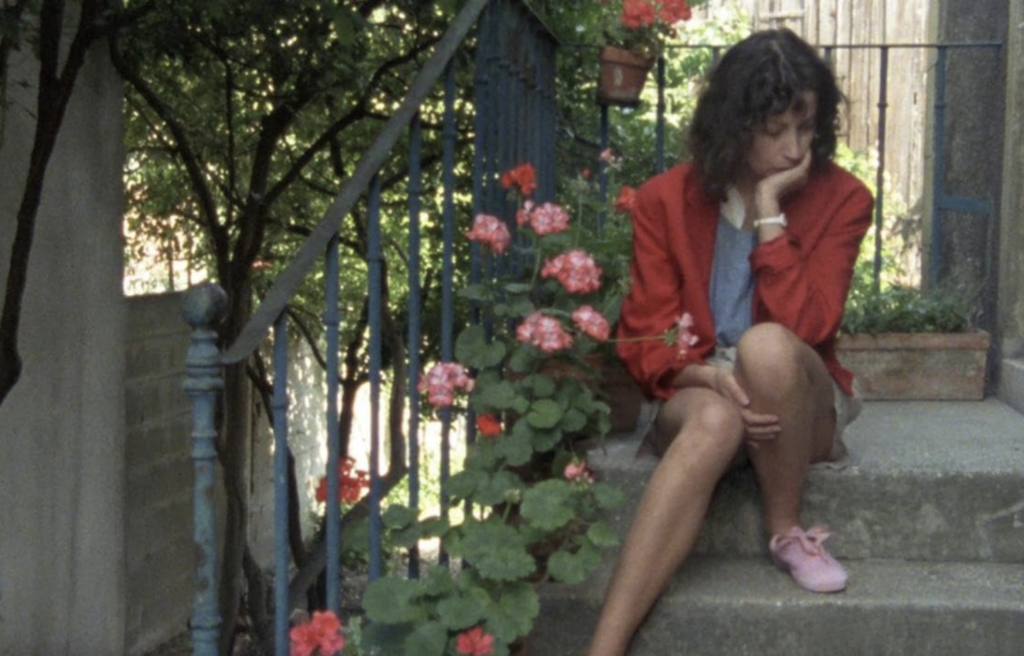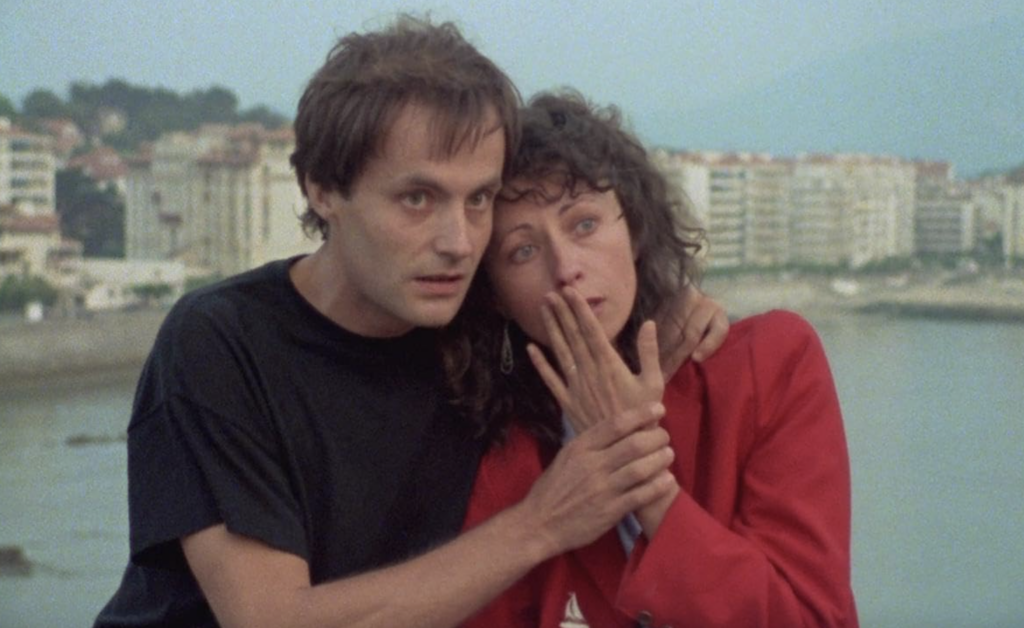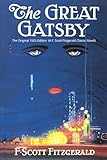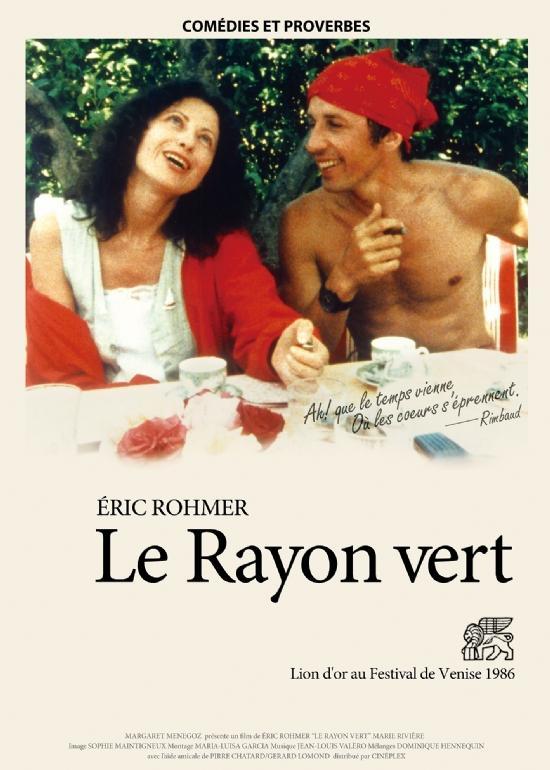One July evening, alone in my apartment but no lonelier than usual, I started scrolling through the movies in my streaming library. I landed on Summer (1986), what I thought was the third entry in Éric Rohmer’s Tales of the Four Seasons series. Fitting. Turner Classic Movies host Alicia Malone launched into her introduction, informing me in her peppy Australian cadence that it was actually the fifth film in a different Rohmer series, Comedies and Proverbs. The film’s French title, Le rayon vert, literally translates to The Green Ray.
The story sounded slow and aimless. After her friend bails on their summer vacation plans for a man, a young single woman isn’t sure where she should go on a solo trip. She spends most of the movie pondering the merits of one locale vs. another. The dialogue was largely improvised by non-professional actors and Rohmer shot very few takes, fostering performances that seem as natural and effortless as the clothes they wear. I wasn’t sure I was in the mood, finger hovering over the stop button. But I decided to give it a try. This is how I enter most relationships—reluctantly, and with low expectations. The film wasn’t what I set out to watch. But, sometimes, you find exactly what you need when you think you’re looking for something else.
Rohmer offers a diaristic character study of Delphine (played by frequent Rohmer collaborator Marie Rivière), a secretary living alone in Paris. Each vignette opens with a close-up of the date in green handwriting, presumably Delphine’s. As I predicted, the story meanders along at a measured pace, the better to conjure a sense of quotidian ennui. Delphine could be the poster child of what’s now commonly known as Sad Girl Summer, a trend enshrined by artists like Sally Rooney and Lana Del Rey. She is beautiful but unaware of her beauty, with wavy brown hair, soulful eyes that well up at the slightest sorrow, and an outlook that oscillates between dreamy and dreary. At first glance, she appears closed off, but her brittle exterior is a form of self-protection. We learn, through conversations with friends (also Rooney-like), that her heart is fragile after a romance with a careless man led nowhere. “I need a real vacation,” she cries.
Delphine’s narrative unfolds in brief episodes as she flits from one place to another—the seaside, the Alps (she immediately turns around after arriving), back to the city, then to the beach, in Biarritz. Searching for what, she doesn’t know. But, like Goldilocks, she insists it must be just right. Her friends advise that she needs to lower her standards. Be less stubborn. “I’m not stubborn,” Delphine protests. “Life is stubborn toward me.”

The truth is, I see myself reflected in Delphine. I know the anxiety and indecision of being a young single woman alone in the summertime. There’s an overwhelming societal pressure to seize the long days—to go somewhere and do something, ideally Instagram-worthy (see: #HotGirlSummer). But what if I don’t want to travel alone? I live alone. I work alone. I watch movies alone.
Most of the time, I enjoy my independence. And I’m not really on my own; I have rich friendships and a close relationship with my family. But like Delphine, I’m surrounded by platitudes about dating: You have to get out of your comfort zone! No one will love you until you love yourself! You always meet someone when you least expect it! Some of the advice is flat-out contradictory: You have to make an effort! Put yourself out there! Then, in another breath, Stop trying so hard! You don’t want to seem desperate!
When I studied abroad in Siena, Italy, one summer during college, I learned a saying that I cling to whenever I’m on the receiving end of these tiresome cliches: Meglio sola che male accompagnata— “Better to be alone than in bad company.” I’d rather belong to myself than be eclipsed by someone unworthy. But I also sometimes feel conflicted. Like Delphine, I’m ambivalent about dating. I’m practical and idealistic, cynical and romantic. I crave intimacy but I fear it. I complain that no one approaches me, but in the rare instances when they do, I recoil. Sometimes I don’t know if I want a relationship, or if I feel like I’m supposed to want a relationship.
It’s easy to fall into a spiral of self-loathing. I’m the common denominator in all my attempts at romance, therefore the problem must lie with me. “I’m not normal, like you,” Delphine tells a friend. “If people don’t come to me, it’s because I’m worthless.”
While Delphine lounges on the beach in Biarritz, she meets another young woman, Lena, who is also on her own. A foil for our heroine, Lena revels in the anonymity and possibility afforded by traveling alone. She tells Delphine she needs to lighten and loosen up if she wants to attract a man. And under no circumstance should she let on how much she wants a relationship. “To find the right person, someone who is good, you shouldn’t show your feelings straightaway,” Lena cautions. “It’s like a card game. You shouldn’t give away what you have in your hand.”
The simile echoes an earlier moment in the film when Delphine, a modern Little Red Riding Hood clad in a red poncho, finds a playing card face down on the rocks. She turns it over to reveal the Jack of Hearts, a symbol of good luck and happiness, perhaps even love. This isn’t the first time she’s made this kind of serendipitous discovery. “I sometimes find cards in the street,” she told her friends back in Paris. “Sometimes, when I least expect it. I’m just walking along and I find a card. It always means something.”
Delphine wears her heart on her sleeve; no cards are hidden up there. Speaking to Lena, she insists, “I have nothing in my hand.” Dating is a game, but Delphine doesn’t want to play. Neither do I, for that matter. The apps have quite literally gamified dating—potential mates are shuffled and sifted through like a deck of cards. And all too often, it’s stacked with jokers. Chance, in-person encounters feel consigned to the realm of fairy tales. “Are you just going to sit around waiting for Prince Charming?” her friends tease. Well, what do you know? Prince Charming shows up at the train station, just as Delphine is heading home from another failed getaway.

 It happens, as the saying goes, when she least expects it. Don’t you hate it when the cliches come true? Delphine is sitting on a bench engrossed in Dostoevsky’s The Idiot—a bit heavy for a summer read. (As someone who once lugged Bleak House to the beach during a vacation, I stan.) The station is a liminal space of arrivals and departures, beginnings and endings. The stranger, Jacques (played by Vincent Gauthier), notices Delphine and angles his body towards her, eventually crossing the room and asking if he can sit beside her. Jacques’s advances are slow and gentle, in contrast with the clumsy and even wolf-like manner of the men Delphine encounters earlier in the film. This time, she is receptive. She shows him her book and doesn’t shy away from being read, too. She completely opens up during their conversation—you can see it in her expression and in the way she holds herself. She was always beautiful; here, she is radiant. Without anxiety or hesitation, she asks if she can accompany Jacques to his destination to continue their conversation, and he agrees. Their dialogue lasts through the remainder of the day, and the film, until the sun goes down.
It happens, as the saying goes, when she least expects it. Don’t you hate it when the cliches come true? Delphine is sitting on a bench engrossed in Dostoevsky’s The Idiot—a bit heavy for a summer read. (As someone who once lugged Bleak House to the beach during a vacation, I stan.) The station is a liminal space of arrivals and departures, beginnings and endings. The stranger, Jacques (played by Vincent Gauthier), notices Delphine and angles his body towards her, eventually crossing the room and asking if he can sit beside her. Jacques’s advances are slow and gentle, in contrast with the clumsy and even wolf-like manner of the men Delphine encounters earlier in the film. This time, she is receptive. She shows him her book and doesn’t shy away from being read, too. She completely opens up during their conversation—you can see it in her expression and in the way she holds herself. She was always beautiful; here, she is radiant. Without anxiety or hesitation, she asks if she can accompany Jacques to his destination to continue their conversation, and he agrees. Their dialogue lasts through the remainder of the day, and the film, until the sun goes down.
Does Delphine change over the course of the film? I’m not so sure. I think the universe (via Rohmer) just finally gives her a break. She remains herself and, at last, someone worthy takes notice. They say good things come to those who wait.
*
 The best stories lead to other stories. If you happen to get lucky, you could jump from one to another in an endless, self-generating voyage, as smoothly as a projectionist changing reels. Rohmer’s film led me to an 1882 novel by Jules Verne, also titled The Green Ray. Released just over a century later, Rohmer’s take is better than an adaptation: it’s a full-bodied reimagining.
The best stories lead to other stories. If you happen to get lucky, you could jump from one to another in an endless, self-generating voyage, as smoothly as a projectionist changing reels. Rohmer’s film led me to an 1882 novel by Jules Verne, also titled The Green Ray. Released just over a century later, Rohmer’s take is better than an adaptation: it’s a full-bodied reimagining.
It’s not until roughly two-thirds of the way through the film that we come to the heart of Delphine’s journey. While on one of her solitary walks in Biarritz, she comes across a group (four women and one man) sitting on a stone wall overlooking the beach. She overhears their conversation about a novel, Verne’s The Green Ray, and the optical phenomenon that gives the book its title: the moment just before sunset when the sun hits the horizon, emitting a fabulous flash of green. The sight only lasts a moment or two, and the weather conditions have to be just right for it. Kind of like falling in love.
The novel isn’t Verne’s usual sci-fi fare, but rather a romantic comedy of manners in which the main character, Helena, becomes obsessed with the Green Ray, which she believes will help her know her own heart and decide on a suitor. She searches far and wide in hopes of seeing the light. Rohmer stages a literal leaning-on-the-fourth-wall moment as his own characters discuss the characters in the novel: “The heroine is a fairy tale heroine. She’s as simple as Cinderella or Snow White,” one of the women observes.
A motif of green is woven throughout the film, in Delphine’s ensembles, in the mise-en-scène, and in the detritus Delphine finds in the street and on the beach. Each object is a talisman steering Delphine, beckoning her to keep going. Green means go. The opposite of the red flags that we single women are ever vigilant against in dating. In the film’s finale, Delphine and Jacques walk past a souvenir shop labeled The Green Ray. It’s a literal sign. Delphine and Jacques find a spot on the beach where they can watch the Green Ray together.

Immediately after finishing The Green Ray the movie, I searched for its namesake, the Verne novel. As in the film, the moment when the heroine, Helena Campbell, first learns of the phenomenon has a metafictional sheen. She reads about it in an article in The Morning Post like one would a classified ad:
Have you sometimes observed the sun set over the sea? Have you watched it till the upper rim of its disk, skimming the surface of the water, is just about to disappear? Very likely you have; but did you notice the phenomenon which occurs at the very instant the heavenly body sends forth its last ray, which, if the sky be cloudless, is of unparalleled purity? No, perhaps not. Well, the first time you have the opportunity, and it happens but rarely, of making this observation, it will not be, as one might think, a crimson ray which falls upon the retina of the eye, it will be ‘green,’ but a most wonderful green, a green which no artist could ever obtain on his palette, a green which neither the varied tints of vegetation nor the shades of the most limpid sea could ever produce the like! If there be green in Paradise, it cannot but be of this shade, which most surely is the true green of Hope!
Verne blends science and fantasy in his description of the Green Ray, as Helena is “bewitched” by the “true green of hope.” She drags her uncles on a voyage in search of this vision, which she believes will reveal her heart’s true desire. Until she beholds the Green Ray, Helena refuses to marry.
Verne’s novel is a more action-packed affair than the Rohmer film, a swirl of shipwrecks and storms and satire. But at the core of both stories are women searching for the Green Ray and all that it illuminates. There is frustration and loneliness in the search, but also meaning, joy, and self-discovery. Watching the sunset and catching the first glimpse of the Green Ray, Rohmer’s Delphine is overcome with emotion. Jacques wipes away her tears in a tender gesture as they both look to the horizon. I almost missed the moment through my own tears.
*
You know that feeling when you finish watching a film that made you forget you’re alone, and you desperately want to talk to someone about it—but you’re alone? That’s what I felt after seeing The Green Ray for the first time. There’s probably a German word for it. At least, there’s a German filmmaker, Christian Petzold, who described the paradoxical solace and solitude that films can invoke. In a recent interview about his latest feature, Afire, he said, “Cinema is against loneliness, but you have to know what loneliness is to make movies.”
The spark for Petzold’s Afire arrived in 2020, at the start of the pandemic lockdown. Petzold had been given a complete collection of Rohmer films, which he watched while he was sick with Covid. “There was a desire for summer and for the outside, for touching,” he said. Out of that loneliness and craving for connection emerged the idea for his next project—what he called a “summer movie.” You can see the influence of Rohmer’s storytelling rhythm and sensibilities in Afire, which centers on a mopey, self-important writer named Leo who makes Delphine look like a social butterfly. The cringe comedy in Afire—which hinges on awkward encounters, unrequited crushes, and petty jealousies—proves combustible. The film’s German title translates to The Red Sky, an apocalyptic inversion of The Green Ray. The red sky in question is an urgent indicator of encroaching wildfires near the Balkan Sea.
Attending a screening with fellow New Yorkers just days after our sky turned a sickly orange from the fires in Canada, I couldn’t ignore the story’s global context, as a warning of warming. Zooming out, the reality of our steadily heating planet, as seen in record-breaking heatwaves and deadly wildfires across the globe, casts a pall over vacation planning. How does one even fantasize about relaxing on the beach while knowing that destinations like Maui and their full-time residents are being ravaged by climate catastrophe? What does it matter if I’m burned out and single, when the world is burning?
 All of this is transpiring amid a so-called “loneliness epidemic.” For now, I’m relying on books and movies to sustain me. Because what are the odds that two people, both open and available to romance, find themselves in the same place at the same time, and attracted to one another? Blink and you might miss it. You need to believe in a kind of cosmic magic. Or, the cynic would say, you need to be a little bit delusional, like Gatsby searching for his green light.
All of this is transpiring amid a so-called “loneliness epidemic.” For now, I’m relying on books and movies to sustain me. Because what are the odds that two people, both open and available to romance, find themselves in the same place at the same time, and attracted to one another? Blink and you might miss it. You need to believe in a kind of cosmic magic. Or, the cynic would say, you need to be a little bit delusional, like Gatsby searching for his green light.
Romance, like film, is in large part projection. Rohmer tried but failed to capture the Green Ray. Instead, he had to simulate it through special effects. It’s a reminder that, however authentic his film may feel, it’s still a film—a fairytale reflection, or refraction, of real life. Even so, I want to believe in the optimistic vision of the Green Ray. I want wide-screened movie magic and unexpected meet-cutes to rescue me from the algorithmic tedium of dating apps. I imagine that love is like finding a book on the shelf, the one you didn’t know was meant for you. I’m doing my best to leave room for serendipity and surprise—to let go of expectations and timelines and be in the moment. The search may not lead to a grand epiphany or a happily-ever-after. That’s okay, too. I have an entire library of soul mates and kindred spirits in books and movies to keep me company along the way. “It is even better […] to see the Green Ray in a painting […] than in nature,” Helena’s uncles remark at the end of their novel-spanning journey. “For looking at so many sunsets, one after the other, does the eyesight no good.”









